Tourism in the Czech Lands at the turn of the 19th and 20th cent.
The transformations of the lifestyle at the turn of the 19th and 20th centuries also affected the leisure time. The desire to return to nature increased. The comprehensive sports organisations were accompanied by specific tourist associations, which often acted in a nationalist spirit. Their typical activity, in addition to the trips, was building lookout towers. The Czech Tourist Club, a purely Czech association, was established in 1888. Its activity focused on the creation of a tourist route network. The first marked tourist route running south of Prague from Štěchovice to Svatojanské proudy was created in May 1889.

St John's Rapids, a popular tourist destination, in: Ottovy Čechy II (1884). Library of the Institute of History, CAS.

Model of the Vltava River before the construction of the Štěchovice Reservoir that flooded St John's Rapids. © Institute of History, CAS, v.v.i. (Eva Semotanová, Kateřina Křováková)
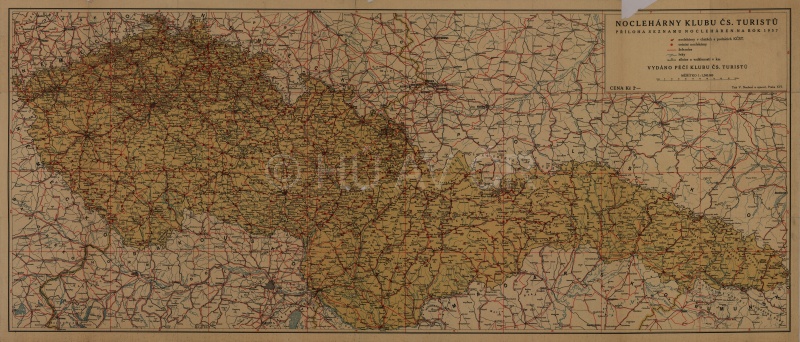
Map of night shelters of the Czech Tourist Club (1937). Map Collection of the Institute of History, CAS. Display map
References
Pelc, M.: Umění putovat. Dějiny německých turistických spolků v českých zemích. Brno 2009;
KČT – Klub českých turistů, available at www.kct.cz [verified 05/03/2020];
Semotanová, E. ‒ Cajthaml, J. a kol.: Akademický atlas českých dějin. Praha 2014, 2. akt. vydání 2016.

This work is licensed under a Creative Commons BY-NC-ND 4.0
Reservoirs and dams in the Czech Lands
Reservoirs and dams dramatically change the character of the landscape. A reservoir is a space that holds water for its further use in agriculture, industry, recreation or as drinking water. It can catch floodwater to prevent damage to the river downstream and regulate the flow in dry periods. A dam is a structure that allows the construction of a reservoir. The oldest reservoir in the Czech lands is Mácha Lake built in 1272, the youngest Slezská Harta (1987-1997). Reservoirs strongly affected the lives of the people when many urban areas, forests, and agricultural lands disappeared under the water.
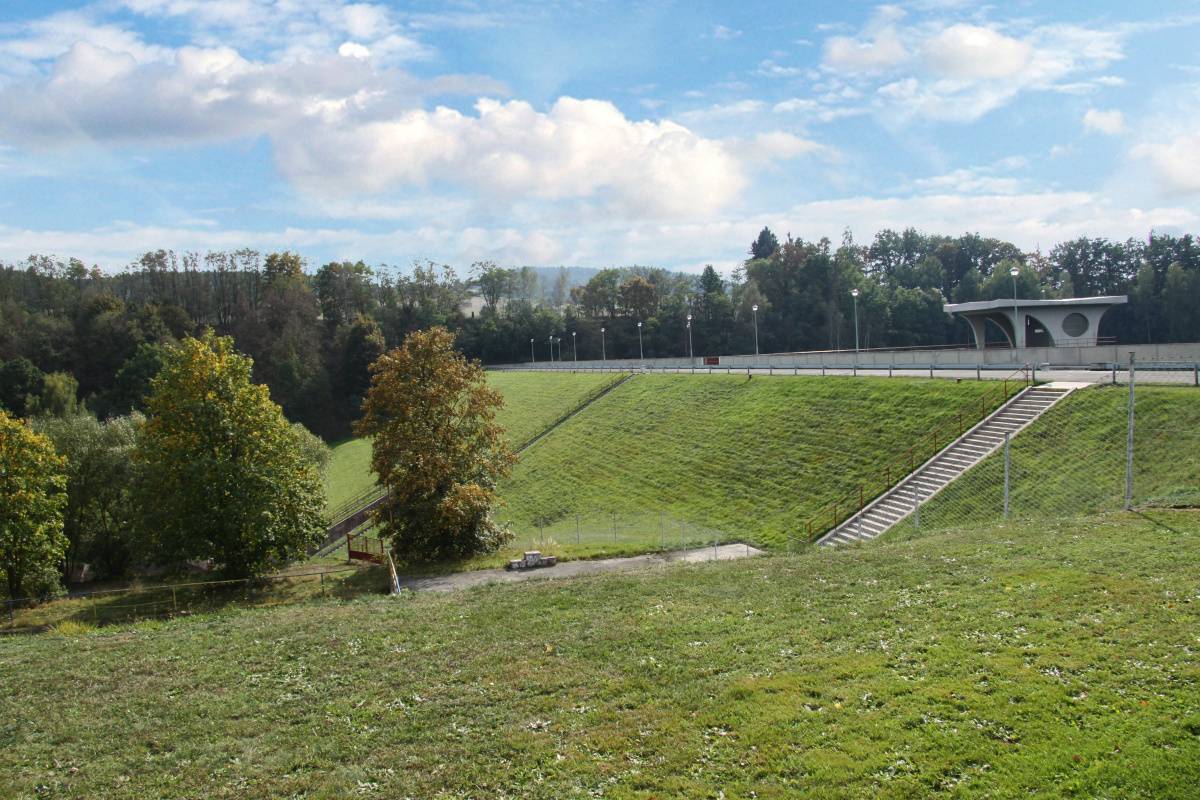
Rockfill dam of the Trnávka Reservoir. Photo Dana Fialová, 2015.

Concrete gravity dam of the Vrané Reservoir. Photo Dana Fialová, 2018.
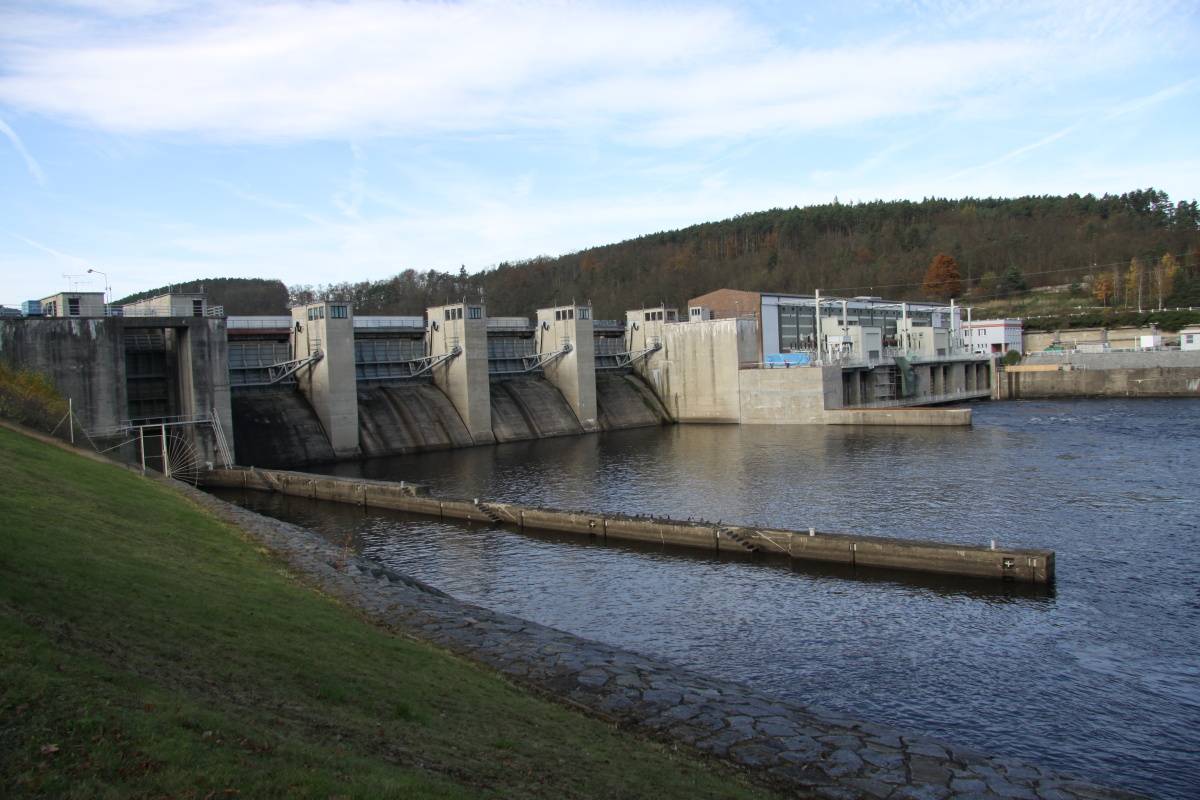
Concrete gravity dam with power station of the Kamýk Reservoir. Photo Dana Fialová, 2013.

Concrete gravity dam with power station of the Slapy Reservoir. Photo of Dana Fialová, 2018.
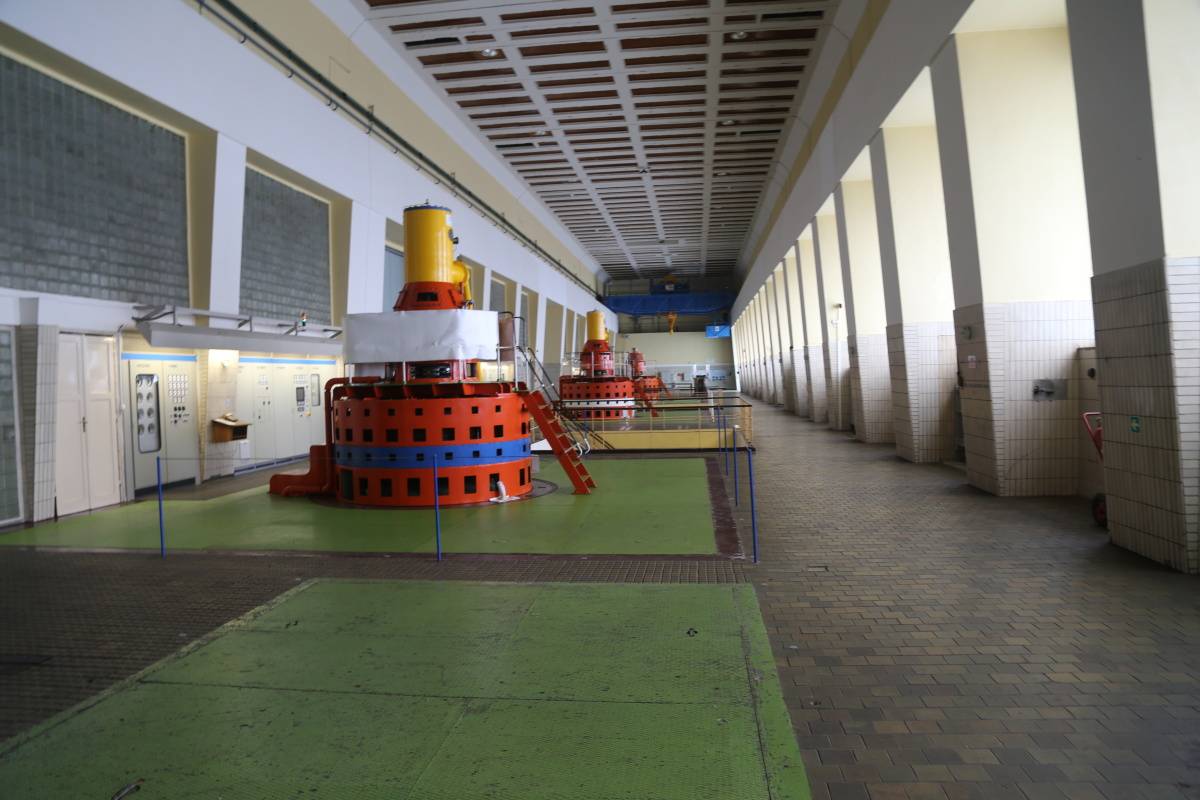
Generator hall of the Slapy power station under the dam overflows. Photo Jaromír Fiala, 2018.
References
Broža, V. a kol.: Přehrady Čech, Moravy a Slezska. Praha 2005;
Stráský, J.: Přehrady Čech, Moravy a Slezska – průvodce. Liberec, 2010;
Švihálek, M.: Stavitel přehrad – Putování legendárního moravského vodohospodáře Jana Čermáka 20.stoletím. Praha, 2012;
Vlastní výzkum, 2018.

This work is licensed under a Creative Commons BY-NC-ND 4.0
Spas and healing springs in the Czech Lands
The Czech lands are extremely rich in healing springs and spas. There used to be many more spas and locations using mineral water, peloids, or climate, but their number has dropped due to various circumstances. There is a reference to 276 spa locations of which 82 were functional in 1925, 49 in 1949, and 37 in 2019. The golden era of our balneology was the turn of the 19th and 20th centuries. The rapid development of therapeutic procedures and their efficiency enhanced the prestige of the spas, which thus became social and cultural centres.

Balneological map of Czechoslovakia (ca. 1918-1938). Map Collection of the Institute of History, CAS. Display map
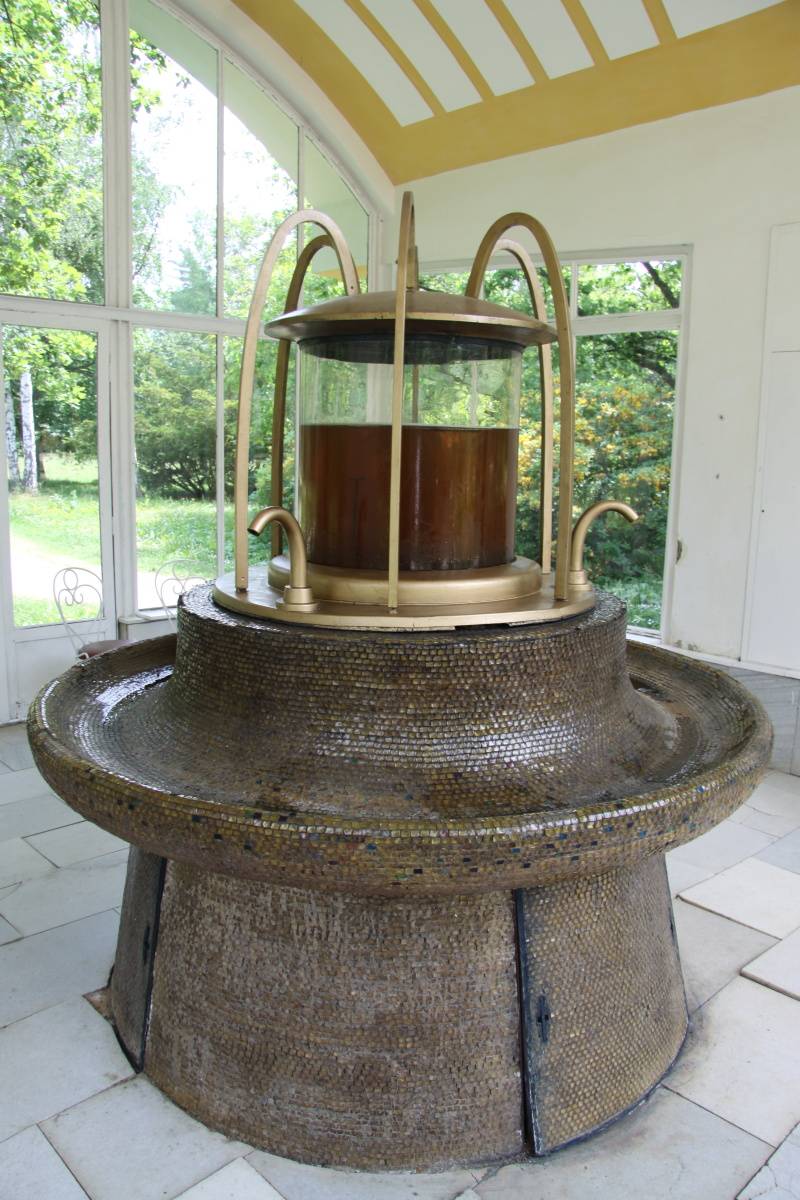
Nový pramen in Františkovy Lázně has a high iron content. Photo Dana Fialová, 2017.

Spring sink and colonnade in Janské Lázně. Photo Dana Fialová, 2012.
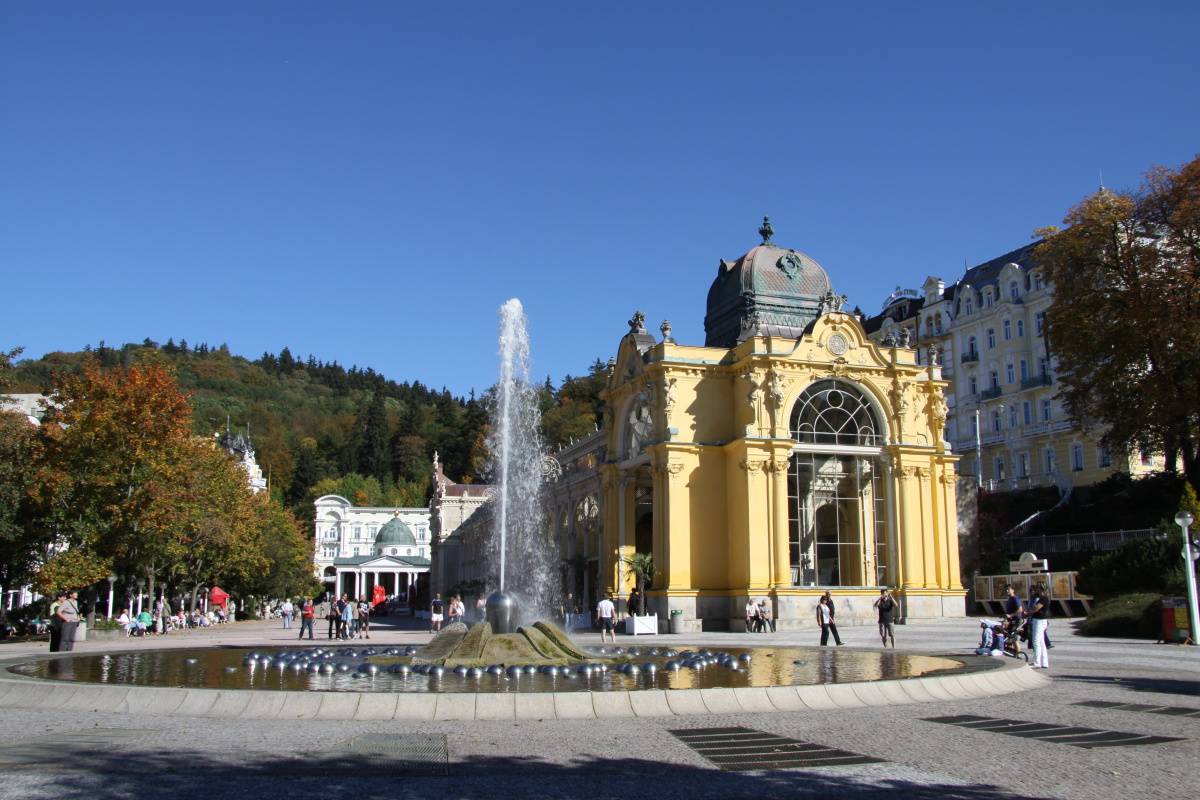
Singing Fountain and Maxim Gorky Colonnade (also called Main Spa Colonnade) in Mariánské Lázně. Photo Dana Fialová, 2011.
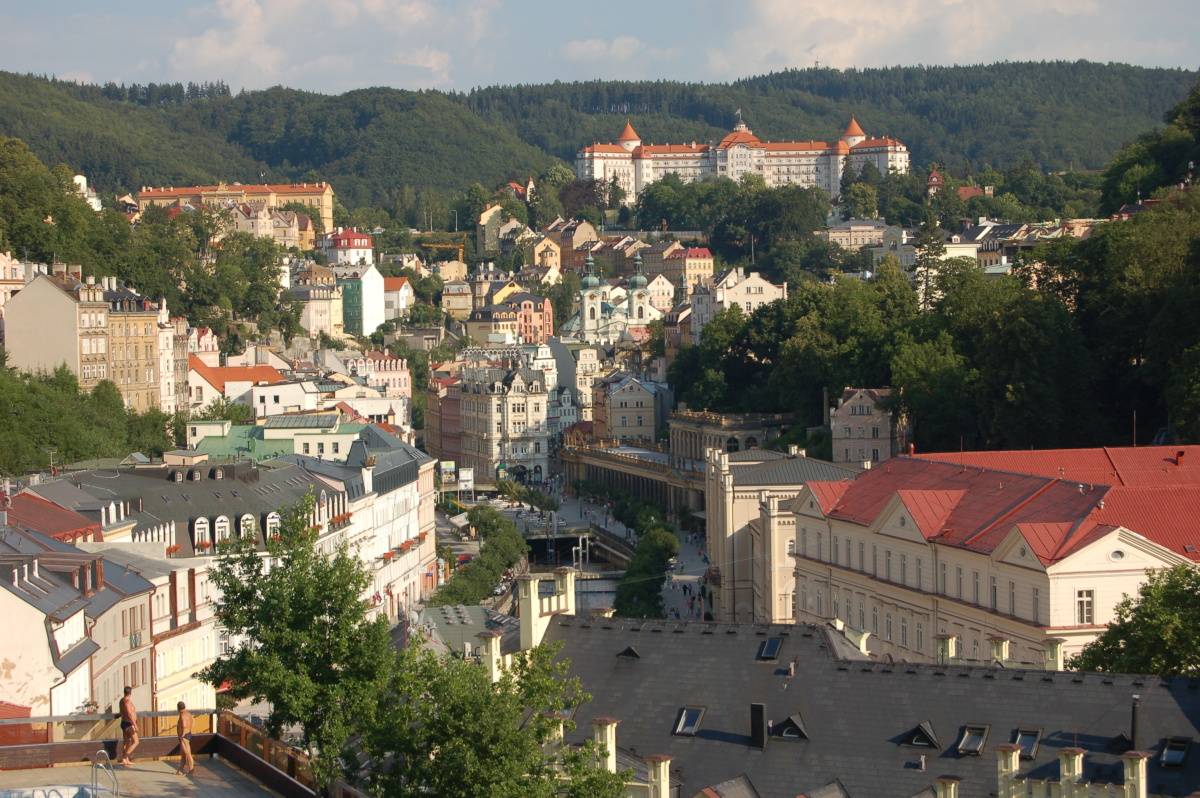
Spa centre in Karlovy Vary dominated by the Imperial Hotel. Photo Pavel Chromý, 2006.
References
Burachovič, S. ‒ Wieser, S.: Encyklopedie lázní a léčivých pramenů v Čechách, na Moravě a ve Slezsku. Praha 2001;
Fialová, D.: České lázeňství. Geografické rozhledy, 13, 2004, č. 4, s.76-77;
Fialová, D.: Lázeňství – spojení darů přírody a lidského umu. Geografické rozhledy, 24, 2014, č.1, s. 8‒9;
Vlastní výzkum, 2018.

This work is licensed under a Creative Commons BY-NC-ND 4.0
Lookout towers in the Czech Lands
Lookout towers are structures intended or additionally adapted to looking around, with a viewing space located at least several meters above the ground, accessible to the general public. They serve as an important attraction connected with leisure time. We can trace their construction to the period of Romanticism at the beginning of the 19th century (the Lednice Minaret, 1802) and some of the surveying towers are still in use (Děčínský Sněžník, 1864). The construction experienced a boom at the turn of the 19th and 20th centuries when tourism gained momentum, but also during the competing of German (the Bismark Tower – Háj u Aše, 1904) and Czech (the Petřín Tower, 1891) tourist associations. More than 120 towers were built between the years 1880-1914, but only 16 in the years 1945-1989. A new boom arrived after 1990 in connection with mobile operators’ transmitters, after 2004 with support from the EU. After the year 2000, more than 200 towers were built.
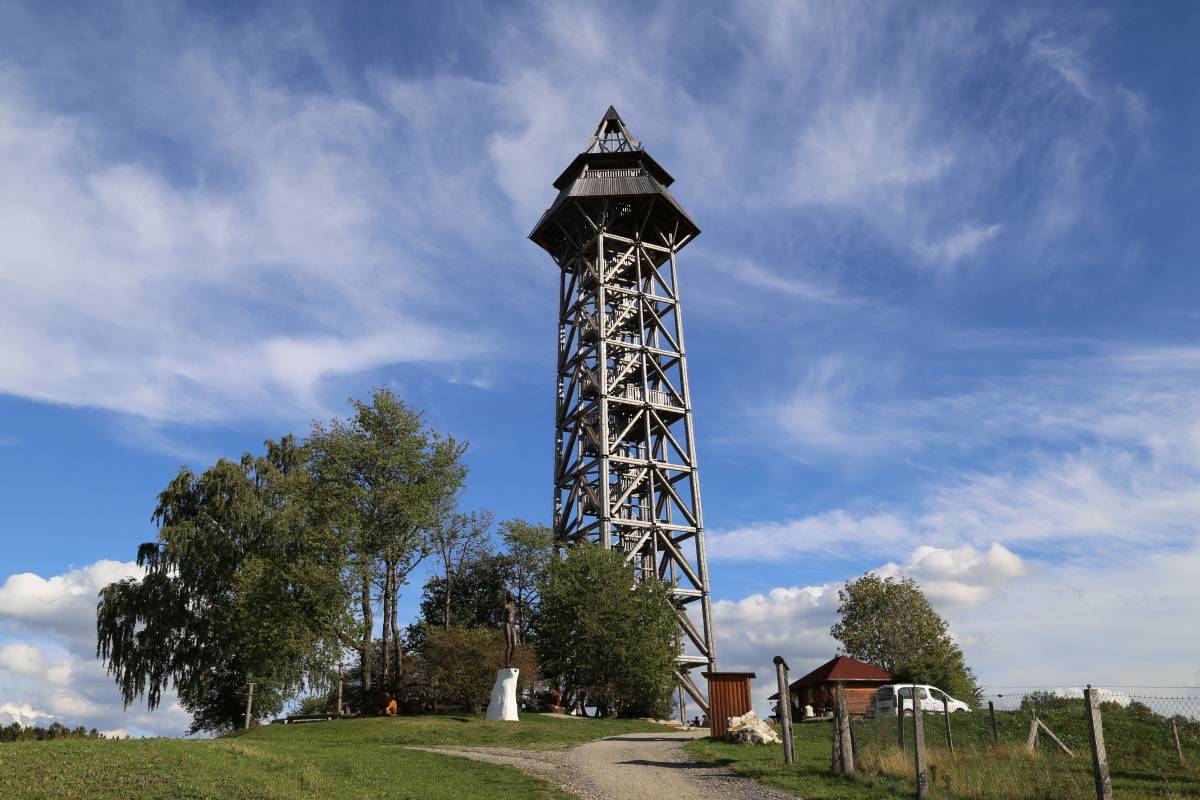
Bohdanka lookout tower near Bohdaneč. Photo Dana Fialová, 2015.

Bohoušův (Šibeniční) vrch lookout tower near Planá. Photo Dana Fialová, 2011.
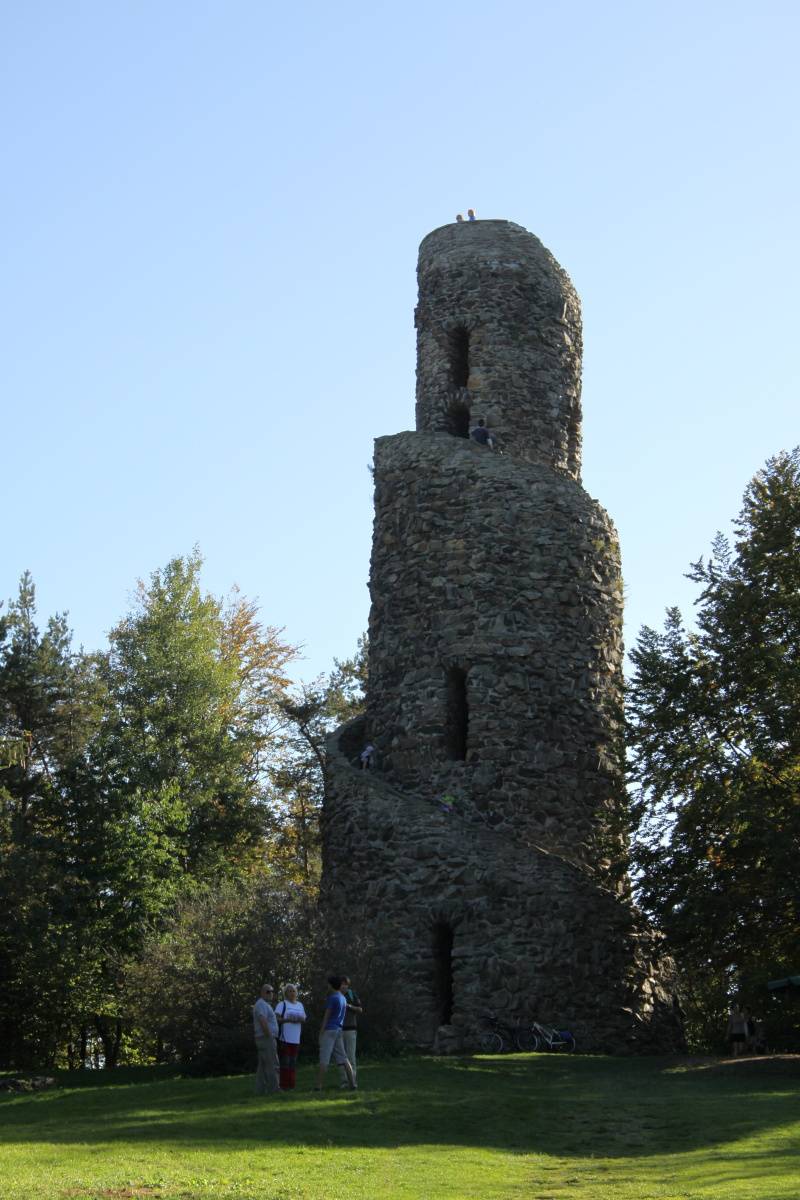
Krásenský vrch lookout tower near Krásno in Slavkovský les. Photo Dana Fialová, 2011.
References
Nouza, J.: Rozhledny Čech, Moravy a Slezska. Liberec 1999;
Vlastní výzkum, 2018;
Fábera, J. ‒ Král, A.: Rozhledny České republiky. Praha 2019.

This work is licensed under a Creative Commons BY-NC-ND 4.0
Tramping
Tramping - a phenomenon that took shape intensively in the Czech Republic in the 1930s, was not only a movement of young people desiring to be free in the countryside „wilderness“, but also an integral part of the transformation of society in the sphere of cultural, sexual and political life. Its cradle is considered to be the naturally attractive and well-accessible southern hinterland of Prague, the so-called “Golden Cross“ – the area of the confluences of the Great (Vltava), Snake (Kocáby), Golden (Sázavy), Old (Berounky) rivers and their tributaries. The most tangible imprint of this phenomenon in the landscape are the cabin settlements, which have survived to this day and can be seen as one of the inspirations for a popular and widespread leisure activity throughout the territory – “chataření“ (cabin activities).

Dominating the tramping cabin settlements, next to the camp circle, is a commune with a playground – the commune of Louisiana near Kocába. Photo Dana Fialová, 2008.
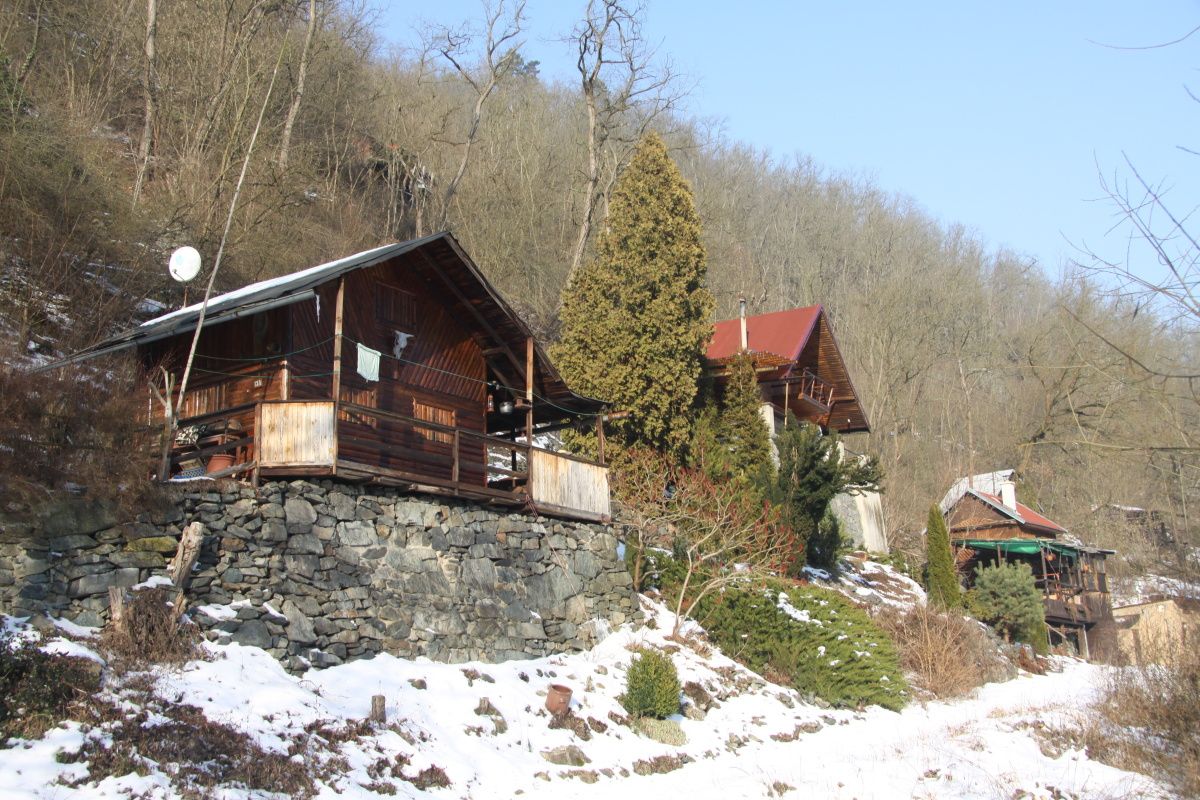
Gradually extended and modernised cabins in the settlement of Goward at Sázava. Photo Dana Fialová, 2017.
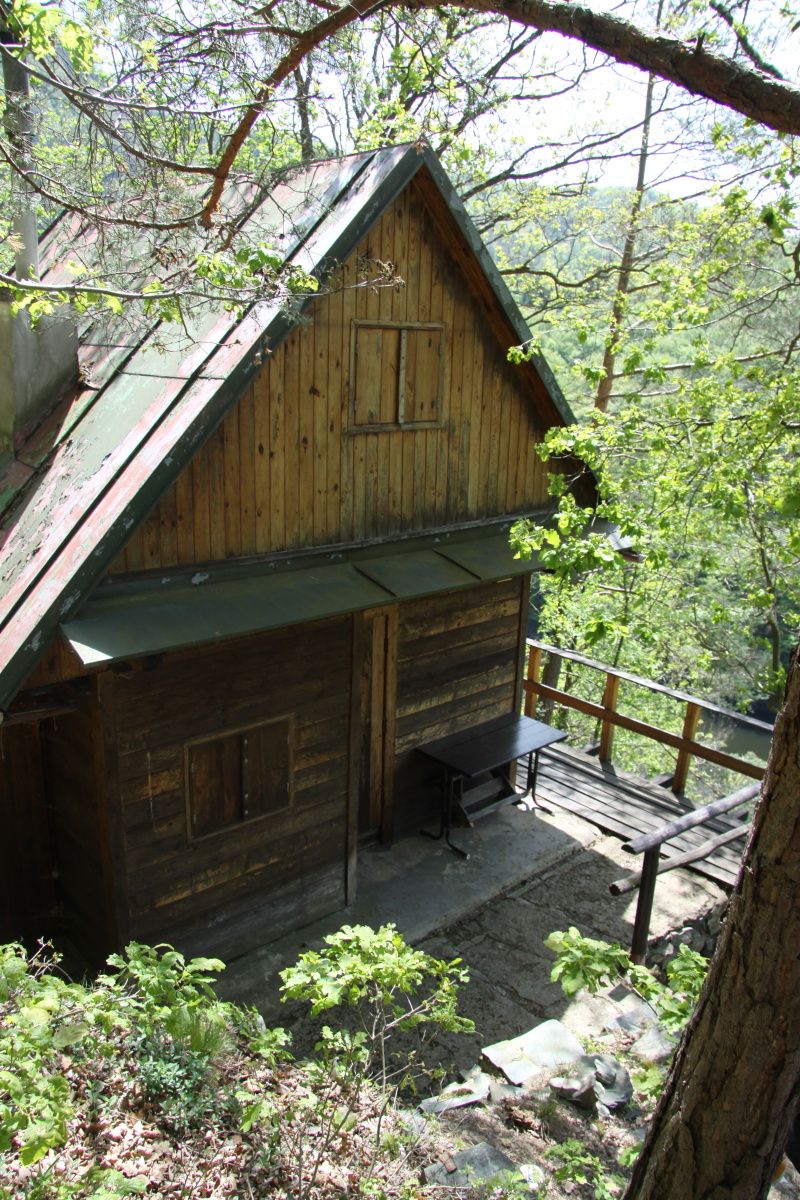
The reward for difficult access to some cabins is a lingering romance – a cabin in the Proudy commune above the level of Štěchovice dam. Photo Dana Fialová, 2019.
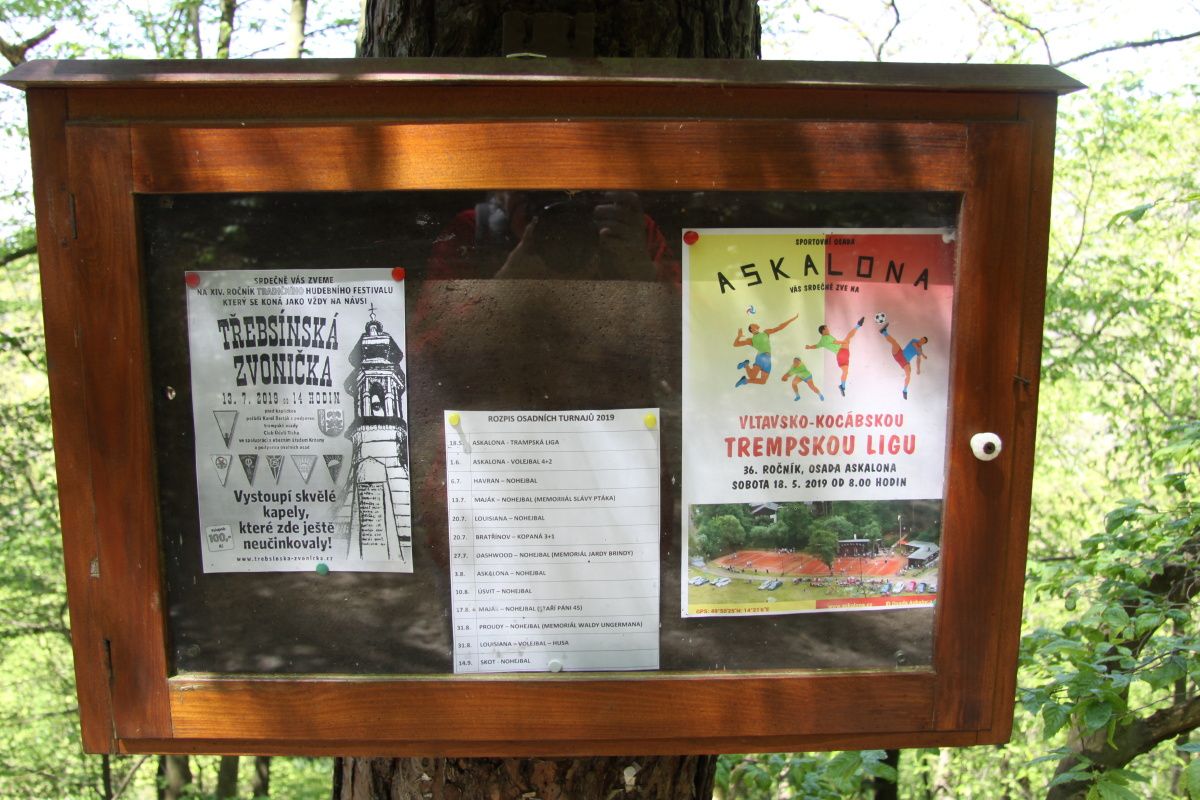
The woodcraft-inspired tramping movement also includes sport, music and theatre - a sign in the Proudy commune. Photo Dana Fialová, 2019.

A cabin in the commune of Ajax on a hillside on the left bank of river Sázava, 1940. Source: Dana Fialová Archive
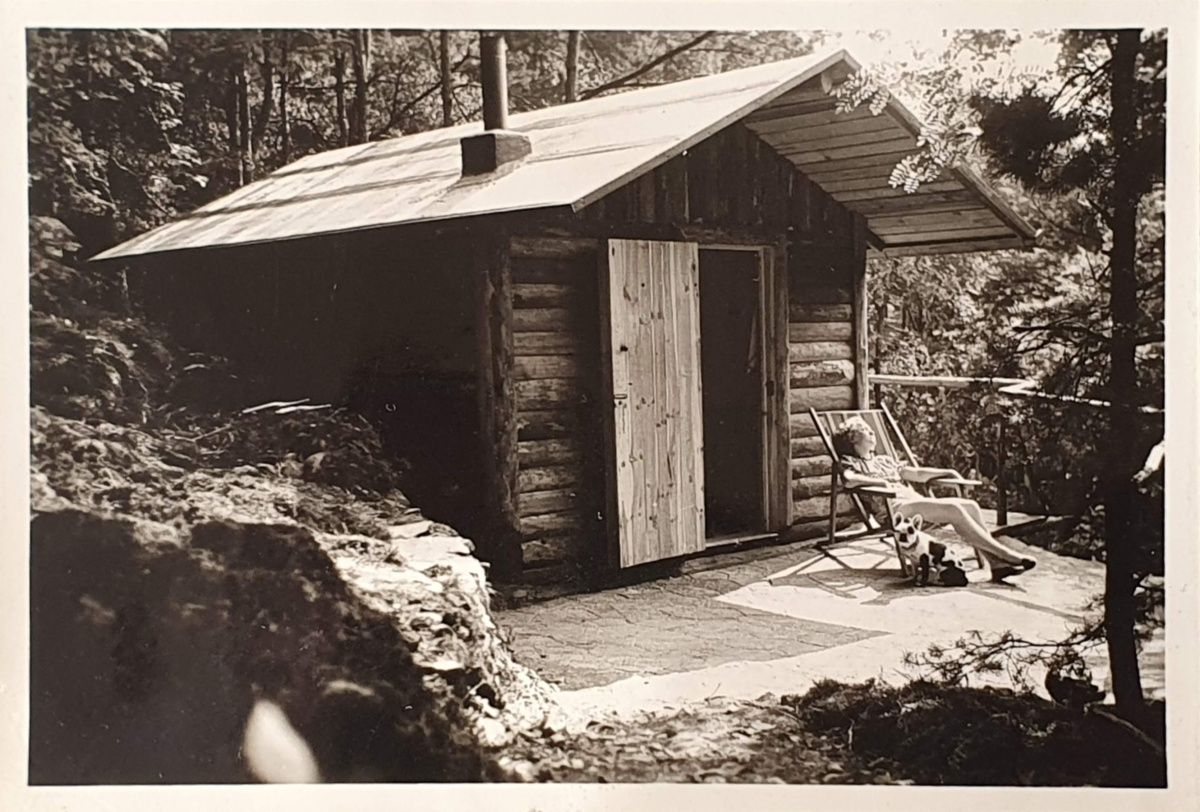
A cabin in the commune of Ajax on a hillside on the left bank of river Sázava, 1940. Source: Dana Fialová Archive

The original cabin from the 1930s in the Bílá skála locality in the meander of the Štěchovice dam, opposite the May lookout point. Photo Vojtěch Pavelčík, 2019.
References
Blažková, T., Fialová, D., Matoušek, V. (eds.): Individuální a masová rekreace v okolí velkých industriálních měst v 19. – 21. století. Praha, Togga, 2014;
Krško, J. a kol.: Český tramping v časech formování a rozmachu. Praha, Academia 2019;
Maršálek, M.: Osadní toulky – nohejbal na trampských osadách v okolí Prahy-Vltava a Berounka. Praha, Mladá fronta, 2015;
Maršálek, M.: Osadní toulky II – nohejbal na trampských osadách v okolí Prahy-Sázava. Praha, Mladá fronta, 2016;
Vlastní výzkum 2018.

This work is licensed under a Creative Commons BY-NC-ND 4.0

